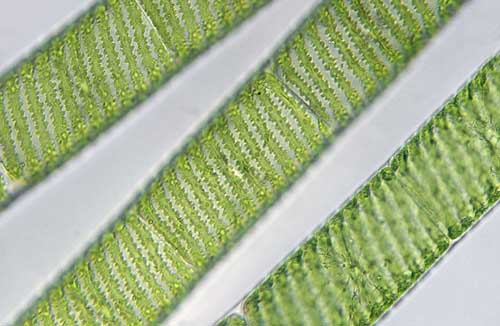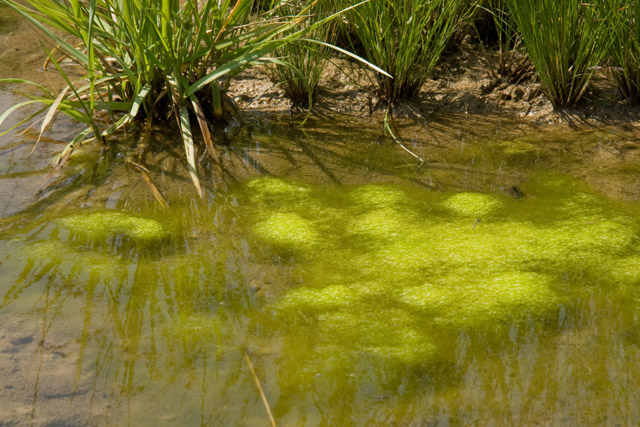
Welcome to the world of Spirogyra Longata!
DAD! My carp got caught in the slime againnnnn! Sound familiar? A wonderful summer afternoon bonding with some fishing poles and the sun, and that wonderful thing we call green algae drags this fishing trip down. Spirogyra Longata, the distasteful, scummy looking masses floating towards the top of bodies of freshwater getting in the way of your afternoon swim or fish are ACTUALLY quite beautiful in structure and reproduction. It is easily identifiable with its long green filamentous structure and freshwater habitat. Though this water looks dirty or even polluted, it is actually eutrophic. No need to worry! Most refer to this tangling mess as green algae, but it can also be known as mermaid tresses or water-silk. This webpage will disclose all you need to know about this filamentous green algae including: Classification, Habitat & Geography, Adaption, Nutrition, Reproduction, Interactions, and other Interesting Facts! Continue exploring for the Classification of Spirogyra Longata.
 Spirogyra
Longata exists in long filamentous, multi-cellular strands of
green algae. Cells connect end-to-end forming chains. The cell
walls have two layers: the inside made of pectin, the outside out of
cellulose. Cytoplasm forms a thin layer in contact with the inside
cell wall. A vacuole takes up most of the cell, with a ribbon-like
chloroplast spirally arranged throughout the cytoplasm. Each cell
wall is surrounded by mucilage. The nucleus is suspended in the cell
vacuole by threads of cytoplasm. Each filament measures between 10
and 100 micrometers in width and these filaments have root-like
structures to help themselves attach to the
substratum.
Spirogyra
Longata exists in long filamentous, multi-cellular strands of
green algae. Cells connect end-to-end forming chains. The cell
walls have two layers: the inside made of pectin, the outside out of
cellulose. Cytoplasm forms a thin layer in contact with the inside
cell wall. A vacuole takes up most of the cell, with a ribbon-like
chloroplast spirally arranged throughout the cytoplasm. Each cell
wall is surrounded by mucilage. The nucleus is suspended in the cell
vacuole by threads of cytoplasm. Each filament measures between 10
and 100 micrometers in width and these filaments have root-like
structures to help themselves attach to the
substratum.
